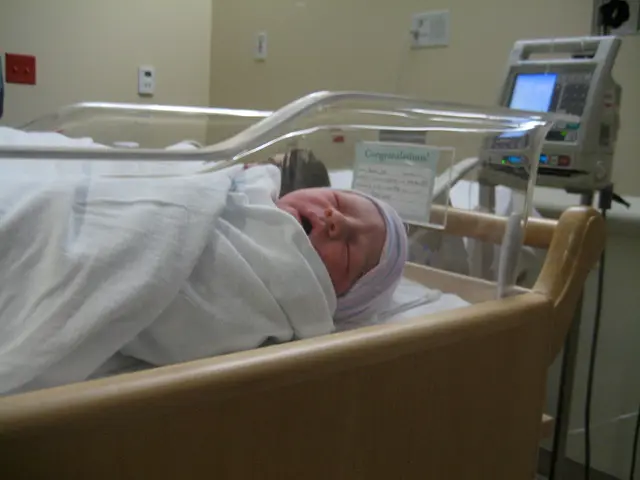Understanding Body-Focused Obsessive-Compulsive Disorder: Symptoms, Remedies, and Insights
Body Awareness Obsessive-Compulsive Disorder: An Unwanted and Unshakable Obsession
Forget about mind over matter. When it comes to body awareness OCD, it's more like mind on overdrive. This type of obsessive-compulsive disorder (OCD) is all about an unshakable obsession with bodily processes or physical sensations, a relentless mental health problem that leaves many individuals feeling tormented and overwhelmed.
Let's break it down. Mental health experts may also refer to this issue as sensorimotor OCD or somatic OCD. They'll call those worrisome preoccupations sensorimotor obsessions, and they aren't your garden-variety thoughts. We're talking about recurring anxieties over body movements like blinking or swallowing, and plenty of other uncomfortable situations.
Welcome to the world of body awareness OCD. Let's dive in and see what it's all about.
What is Body Awareness OCD?
Body awareness OCD is a specific subtype of OCD. It's all about an obsessive fixation on bodily processes, sensations, or movements, and it can make life a living nightmare. According to the International OCD Foundation (IOCDF), it's a distressing preoccupation with one's own bodily functions or physical reactions.
The OCD Cycle: Obsessions and Compulsions
Before we dive further into the world of body awareness OCD, let's take a quick look at what OCD is all about. The American Psychiatric Association (APA) describes OCD as a cycle of obsessions and compulsions.
Obsessions are those intrusive, recurring, and unwanted thoughts and urges that can put you on edge. Compulsions are the repetitive behaviors or mental acts that people with OCD perform in response to an obsession. These behaviors or actions temporarily relieve anxiety while causing significant emotional distress if not performed.
Signs of Body Awareness OCD
People with body awareness OCD typically experience sensorimotor obsessions that focus on a variety of bodily processes or sensations. These could include:
- Awareness of breathing rate or capacity
- Concern about heart rate or rhythm, particularly at night while trying to fall asleep
- Fixation on saliva production, swallowing frequency, or the need to swallow
- Obsessive focus on mouth or tongue movement during speech
- Preoccupation with blinking rate or the need to blink
- Visual distractions like floaters in the visual field or an increased awareness of subtle eye movements
- Obsession with eye contact, such as an awareness of which eye to look at when looking into the eyes of another person
- Awareness of specific body parts, such as the sides of the nose while reading or the hands or feet
People who suspect they may have body awareness OCD should seek the help of a doctor for a proper diagnosis and treatment.
Genetic Risk Factors, Childhood Infections, and Trauma
While the exact cause of OCD remains unknown, researchers have identified some risk factors. Genetics may play a role as having a family member with OCD seems to increase the risk of developing the condition. Childhood streptococcal infections, such as those that cause strep throat, can also sometimes lead to OCD or its issues, especially in children.
Research suggests a possible association between childhood trauma and OCD, though more research is needed to fully understand the connection.
Treatments for Body Awareness OCD
The first line of treatment for OCD is a type of cognitive-behavioral therapy called exposure and response prevention (ERP). This method involves gradually exposing you to situations that trigger your obsessions and anxiety while offering tools and techniques to help resist your compulsions. Through ERP, you learn that you can cope with your thoughts without relying on compulsive behaviors, leading to a reduction in anxiety.
Other treatment options may include medications like selective serotonin reuptake inhibitors (SSRIs), which target serotonin, a brain chemical that may play a role in OCD.
Outlook, Support, and Living with OCD
With treatment, around 7 in 10 people with OCD benefit from either ERP or medication. However, OCD is a chronic condition, and symptoms may fluctuate over time. Professional organizations like the International OCD Foundation, the National Alliance on Mental Illness, and the Anxiety and Depression Association of America provide support and resources for individuals living with OCD.
- Body Awareness OCD, as described by the International OCD Foundation (IOCDF), is a specific subtype of OCD that focuses on an individual's own bodily functions or physical reactions.
- The likelihood of genetic factors influencing the development of OCD, including body awareness OCD, may be higher for individuals who have family members with the condition.
- Treatments for body awareness OCD often involve cognitive-behavioral therapy, specifically exposure and response prevention (ERP), which aims to teach individuals coping mechanisms to manage their obsessions without relying on compulsive behaviors.




